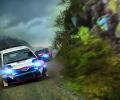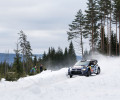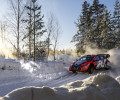From Auto #13: Rallying’s First Hero
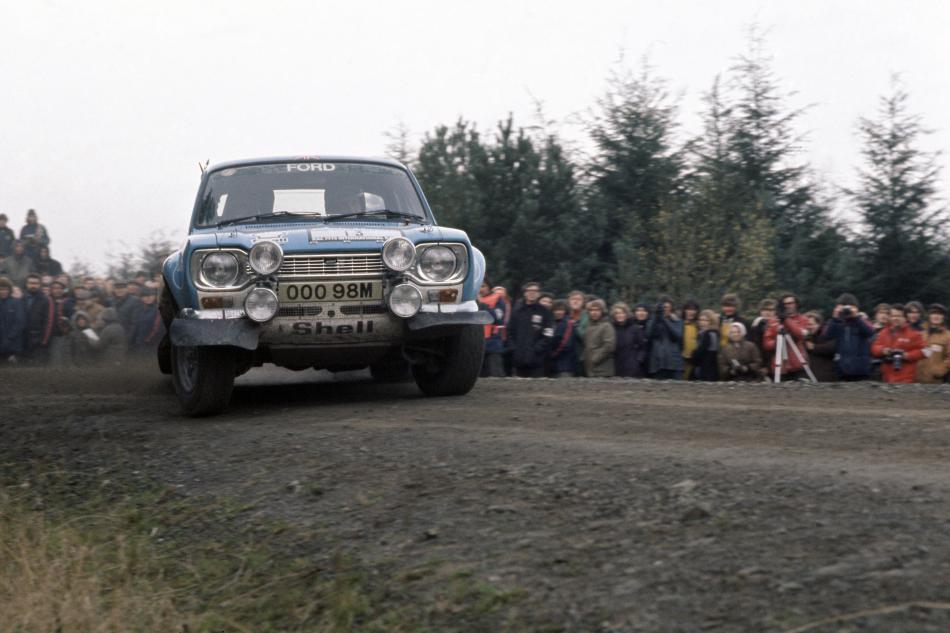
With the briefest of explanations of what it was and even briefer detail on how it worked, Turner headed inside. Realising he hadn’t been followed, he returned to the door and found Mäkinen and the bike had gone.
“Timo was away off down the road before I could remind him how dangerous it was,” says Turner, “not to mention how far he would have to fall.”
That’s Mäkinen, always willing to jump in and give something a go. But it was the natural ability on four wheels that really drew then-British Motor Corporation team manager Turner to Timo.
Three years into his rallying career, Mäkinen borrowed a Mini Cooper from the Finnish importer to use on the Monte Carlo Rally – before taking it around the Monaco Grand Prix track faster than works driver Pat Moss.
Turner was impressed. And keen to bring some Scandinavian speed to BMC’s Abingdon headquarters, he invited Mäkinen, along with fellow Finn Rauno Aaltonen and Swedes Bengt Söderström and Tom Trana, to drive for him on the 1962 RAC Rally. The Swedes retired, but Aaltonen and Mäkinen were fifth and seventh – and were employed. “I thought this was possible,” says Mäkinen, “I thought I would be good enough from 1960, when I started winning.”
DELIVERING IN STYLE
Born in 1938, Mäkinen became a professional driver a long time before he sat in a rally car, delivering newspapers across central Finland for his family business. At 21, the Helsinki-born Mäkinen brothers (Timo’s sibling Harri did the map reading) took to the rally stages in a Triumph TR3. They got to the finish of the 1959 1000 Lakes Rally third in class, just behind a couple of Saabs driven by Erik Carlsson and Aaltonen.
Following his big break on the RAC, Abingdon and Helsinki were in regular contact. A plan was made for the 1963 season. But it didn’t start quite as Mäkinen or Turner might have planned.
Turner says: “Timo joined the BMC team almost by chance. The Morris dealer in Helsinki called into my office in Abingdon and said he was supporting a young lad and it would help get publicity if I could find him a drive on the 1962 RAC Rally.
“At that time, entries for the Monte Carlo Rally had to be in before the RAC Rally had been run, but fortunately I’d entered Christabel Carlisle as a thank you for all her Mini racing successes. The idea was that she’d drive her cousin in an Austin Healey Sprite. I persuaded her to sit alongside this new Finn in a 3000, instead.”
So, Carlisle, knowing no Finnish, guided Mäkinen, a man who – by his own admission at the time – was familiar with only two words in English (one of them was whisky) to 13th place overall and to a GT category win one of the toughest rallies of the season. The Mäkinen magic had arrived.
In his first year with BMC, Timo was in and out of all sorts of cars, with a variety of folk navigating him. There was a need to find a regular voice from the navigator’s seat and, curiously for a man who hadn’t had much experience of the English language, Mäkinen saw the benefit of a British co-driver. “It definitely helped me as a driver,” he says, “but this was another idea from Stuart Turner – he was a very clever man and somebody who was very important in my career.”
A deal was done with Don Barrow, but when he fell ill shortly before the car version of the 1964 Tour de France, Paul Easter got a call. “Just before the Tour,” Easter says, “Diana Kirby [Turner’s secretary] called to ask if I could come to Abingdon to pick up some driveshafts, money and an air ticket. The next thing I knew I was in Lille as co-driver to Timo in a Cooper S.” It was the start of a legend.
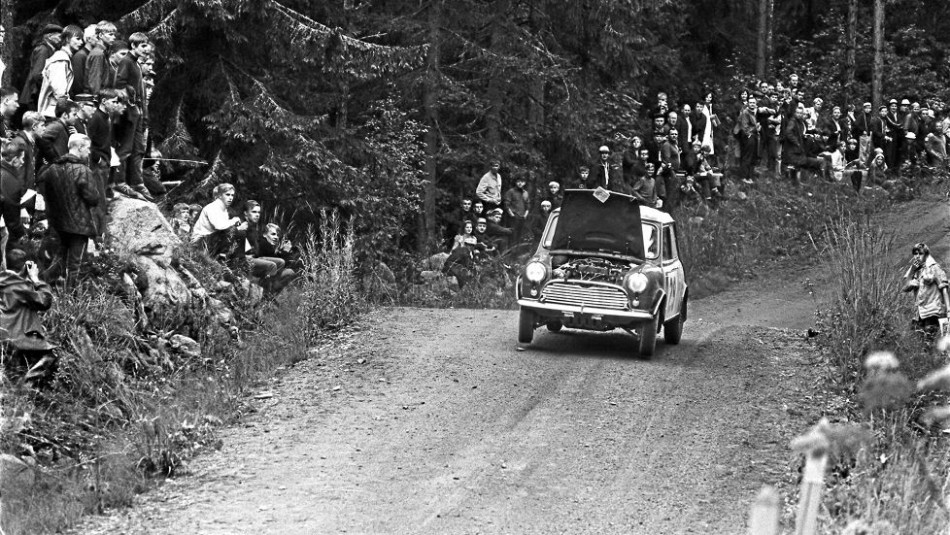
A third 1000 Lakes Rally win in 1967 came despite this bonnet-up moment on the Ouninpohja stage.
TRULY SPECIAL MOMENTS
Victory on the 1965 Monte Carlo Rally still ranks as one of the greatest drives in the history of the sport. Mäkinen eased a Cooper S across some of the most terrifying passes in some of the most extreme conditions and left his opposition trailing in his wake. “That was my best ever result on a rally,” says Mäkinen. “That 1965 Monte win…”
If that was his best result, his best memory followed a few months down the line. “When I won the 1000 Lakes for the first time,” he says, “that was a very special moment for a Finn.”
Mäkinen’s success in host city Jyväskylä ended Simo Lampinen’s hopes of a home hat-trick. Winner on the previous two occasions, Lampinen’s Saab 96 was fourth in ’65.
The hat-trick Lampinen wanted so badly came Mäkinen’s way two years later. Mäkinen’s 1967 1000 Lakes win will only be partly remembered as his third on the bounce; more readily, people recall his progress through the Ouninpohja stage with the bonnet up, the result of a bath sponge inserted between the bonnet and the bodywork to allow more air to flow into the engine. The sponge stretched the retaining straps and when they broke the bonnet shot up.
“We did about 12 of the 25 kilometres like that,” says Mäkinen. “I was third fastest, even though I could hardly see where I was going – the drag was terrible too. I kept trying to put my head out of the window, but the crash helmet was too big! I threw the car sideways this way and the other to try and get a view from the
side windows.” Mäkinen took his hat-trick by eight seconds.
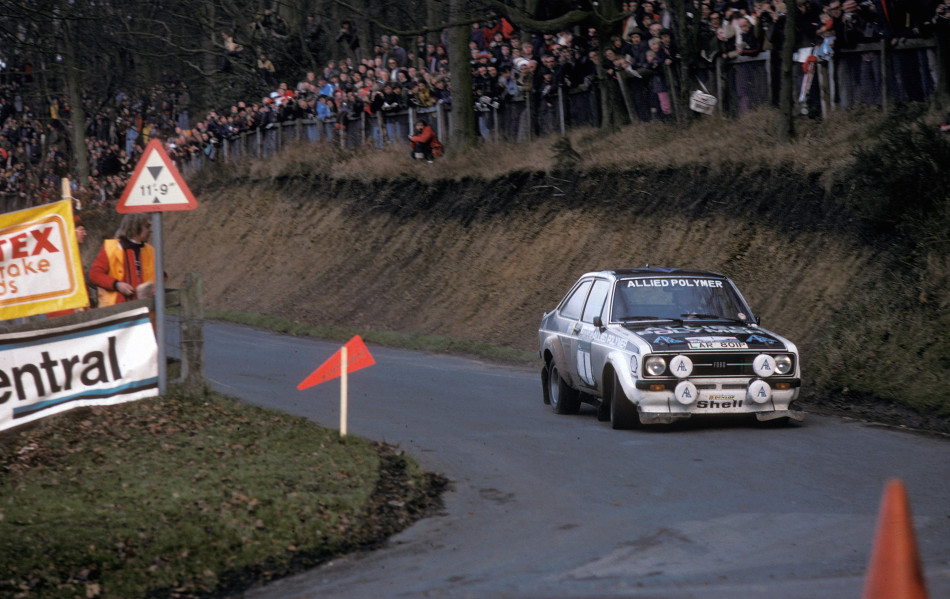
Mäkinen spent much of 1975 a Ford Escort RS1800. He was tough on machinery but has sound mechanical knowledge to back it up
BEYOND BMC
When BMC’s competition department shut in 1968, it was the end of an era. Could Mäkinen’s talents be showcased in anything other than a Mini?
Of course they could. Front-wheel drive God he might have been, but his innate ability made the switch to Ford’s rear-drive Escort as straightforward as turning a page.
There was barely a dip in the steady flow of success. Turner departed BMC bound for Ford’s factory squad – and wasted no time in calling Timo, who would now have Henry Liddon in the co-driver’s seat.
The finest hour for the new partnership was repeated regularly at the end of the 1973, ’74 and ’75 seasons, when they won the RAC Rally – using an RS1600 twice then an RS1800 to conquer the British forests one last time in 1975.
Dousing the stunning black and white Allied Polymer Escort in champagne at the finish in York, few could have known that would be his last win in the world championship. A change in Ford’s team management for 1977 left Peter Ashcroft as the new broom. Mäkinen was swept out in favour of Björn Waldegård, the new face of Blue Oval.
Unwilling to turn his back on competition, Mäkinen signed to Peugeot and longer-distance events with another new co-driver, Jean Todt. The Finn remembers his time alongside the FIA President fondly.
“Jean was always very exact,” he says, “We never had any problems. He was so well-mannered and got along very well with everybody.”
By 1981, time had caught up with Mäkinen and the speed wasn’t quite the same. It’s a shame the drivers’ World Rally Championship title only arrived in 1979, at the twilight of Mäkinen’s career. Had it come 20 years earlier, Sébastien Loeb might not have been the first to celebrate nine titles.
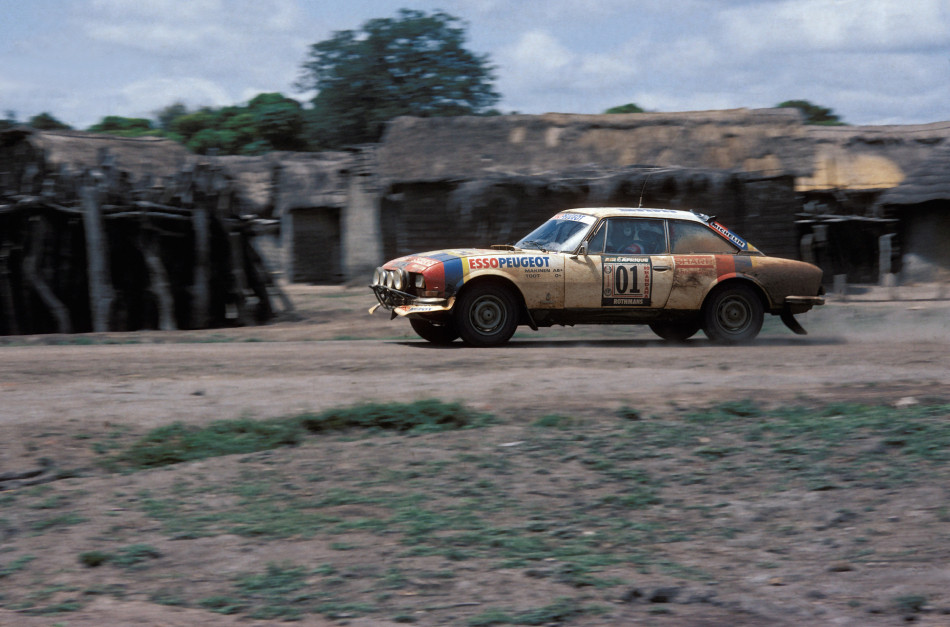
A successful alliance with FIA President and then co-driver Jean Todt began in 1978 in a Peugeot 504 V6 Coupé.

 Facebook
Facebook Twitter
Twitter